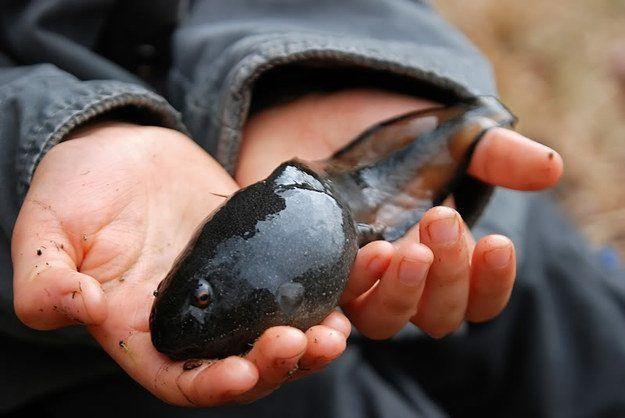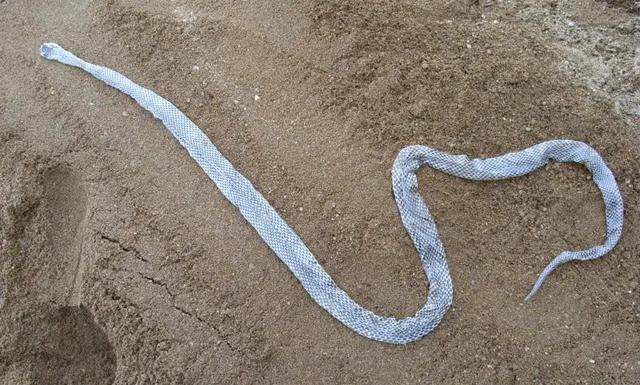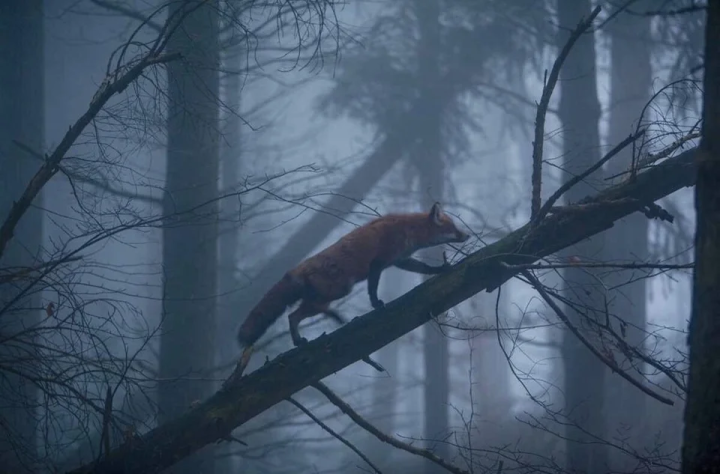The world's largest frog is also one of the most coveted animal proteins in the african "Bushmeat" Trade.
Giant frog
Giant frogs, named after the biblical story of goliath, the giant philipine, are also known as giant bullfrogs. They are the largest and heaviest of all extant frog species.
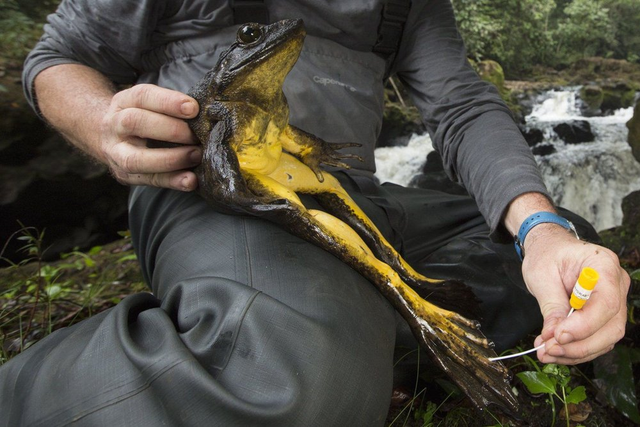
Long legs
Giant frogs have fully webbed toes with huge interphalangeal septa extending down to the tips of the toes, with the second toe being the longest. The dorsum is green in color and the abdomen and ventral portion of the limbs are yellow/orange.
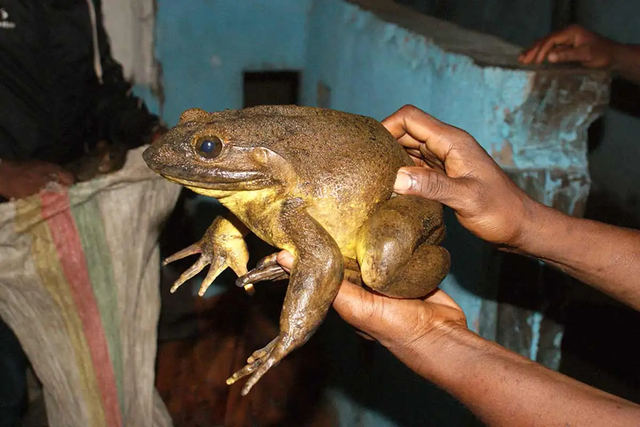
They are ridiculously large, with giant frogs measuring up to 35 cm from snout to buttocks (up to 70 cm or more with straightened long legs) and weighing up to 4 kg.
This species lives only in a relatively small range of habitats in cameroon and equatorial guinea.
The frog that doesn't call, with a special breeding behavior that results in a large size
If there were poets in cameroon, they would not have written such great lines. Because giant frogs do not have vocal sacs, they do not make the "Croak, croak, croak" Calls that frog species make to mate during the breeding season.
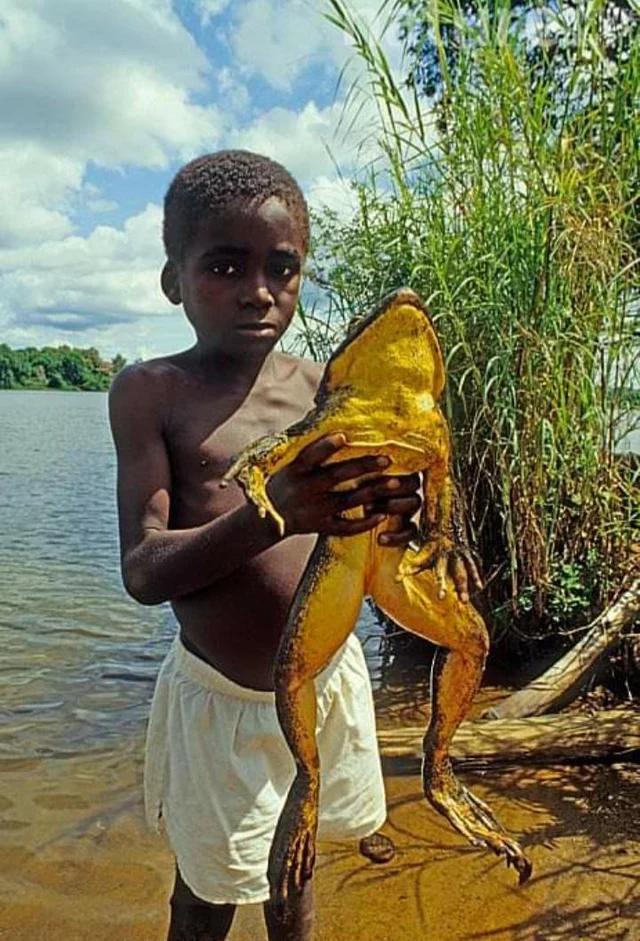
In contrast, giant frogs have unusual breeding behavior.
During the mating season, male frogs dig themselves a lure pool about 1 meter wide and 10 centimeters deep and surround it with large semicircular rocks to build a small pond to serve as a nest for laying eggs.
They need to move quite large rocks in this process. This partly explains the huge size of giant frogs - the bigger the "Muscle man", the better they may be at moving heavy objects when nesting, and the more likely they are to take down females if their nests are well built.
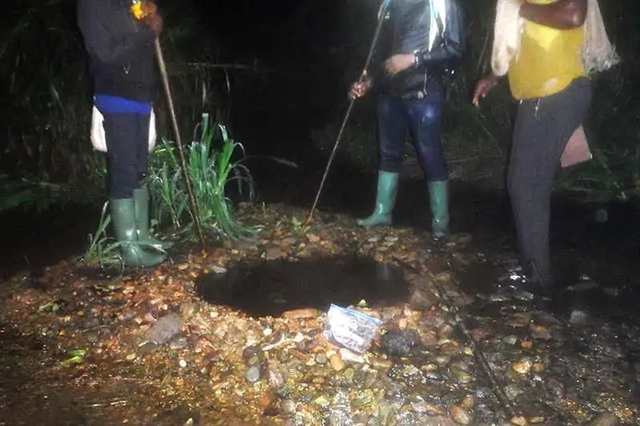
A small pond dug by the giant frog itself
After the small pond is built, the male frog guards it like a sumo wrestler, waiting for the female to come to the door to see the house and take her down in one fell swoop.
Of course, there is a fight to be had with some chicken thief-like males who try to get something for nothing. At that point, the bigger, stronger frog has a better chance of passing on its genes.
Big frogs, little tadpoles
The world's largest frogs are certainly carnivores, but when these giant frogs were tadpoles, they were super picky eaters of only one type of water plant that was a specialty of local waters.
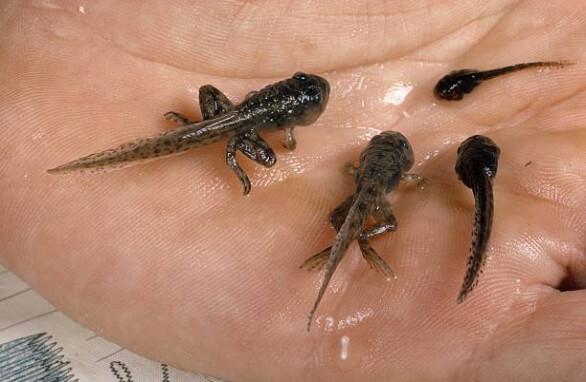
Giant frog tadpoles are very small
Interestingly, despite their very large adult size, giant frog eggs and tadpoles are virtually indistinguishable from most frogs in size and are very small.

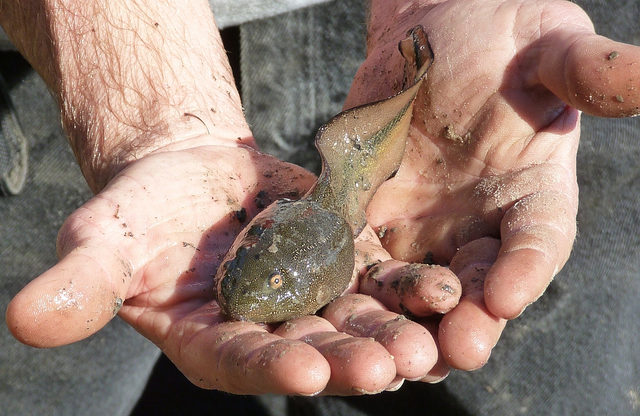
After 90 days of buddhist vegetarianism in the water, giant frogs turn into tiny little frogs about 1.4cm long. Since then, they stop being vegetarians and start getting bigger little by little until they become giants.

Initially a tiny little frog of 1.4cm
The adult giant frogs after the meat has been opened have a rather wide diet, basically any moving animal smaller than them: Spiders, worms and insects, they also eat fish, other amphibians (salamanders, frogs), mollusks, crabs, small turtles, young snakes and small mammals (rats, etc.).

They can live up to 15 years in the wild. In zoos, the record lifespan of the giant frog is 21 years.
Human delicacy
Giant frogs eat all animals smaller than them, and likewise, almost all predators larger than them see them as a meal. Snakes, waterfowl, crocodiles, other carnivores, and, of these, the most important natural predator is humans.

In yaoundé, the capital of cameroon alone, an estimated 2.3 tons of bushmeat are sold every day, most of it illegally harvested, with giant frogs among the prized items.

The giant frog is a protected species in cameroon, but hardly anyone cares, either by the government or by the locals.
Cameroonian (stolen) hunters use shotguns and traps to capture giant frogs on a large scale. The hunters agree among themselves that they need to travel further and further to find the frogs and that the average size of the frogs is declining.
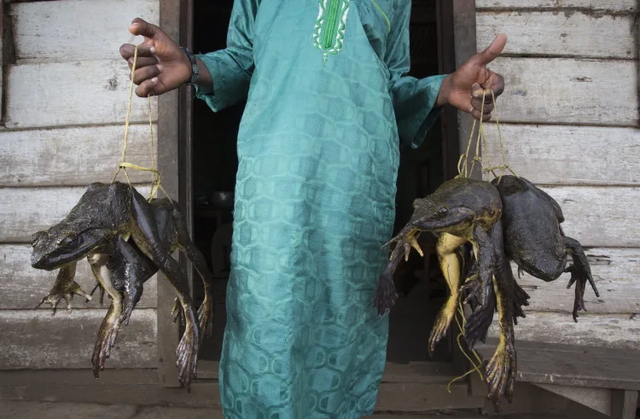
According to the latest estimates, the total population of the giant frog has declined by at least 50% in the last 15 years and the species is now listed as endangered.
Some naturalists have initiated several captive breeding projects between 2015-2020 in order to protect the giant frog, where they organize local people to collect frog eggs and then raise them.
Unfortunately, as of today, this species has not been bred in captivity.

